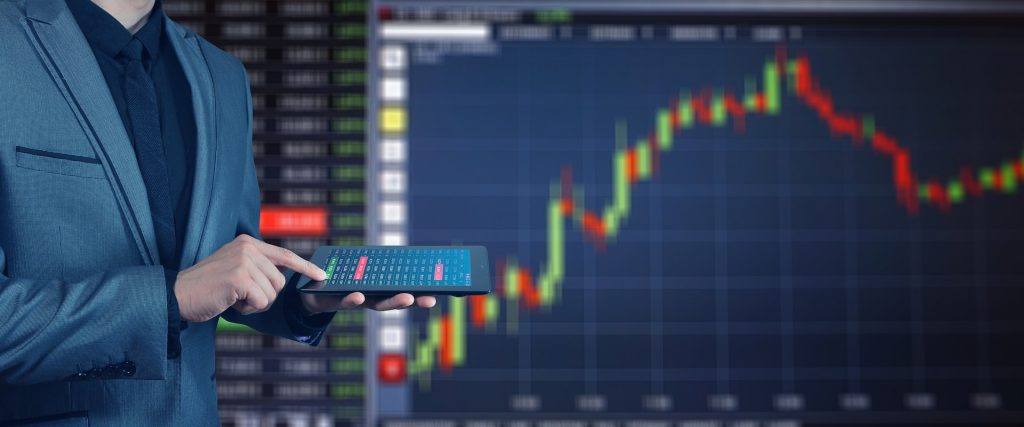A company’s ERP is an essential tool, not only in helping a business streamline its processes, but also in building greater efficiency, accuracy, and speed.
Technology continues to evolve at an astonishing rate. Companies are struggling to keep pace with this digital revolution with enterprise technologies that are inflexible and increasingly obsolete, while customers are increasingly demanding improved quality, the speed of service and personalization. Many organizations are already transforming to meet this challenge head-on. They are reinventing and reimagining the way they do business, boldly embracing change at the core of their enterprise IT.
Now we invite you to explore “Unleashing Exponential Evolution” we have compiled this short list of five trends that any potential ERP tool buyer should consider in 2019.
1.The Internet of Things
The Internet of Things (IoT) is here and it’s going to stay. As more devices and products become connected to the internet, more data can be automatically funneled into the ERP system, and that’s simply too valuable an advantage to ignore. This trend gives you better oversight over things such as the supply chain, your shipping partners, and appliance performance, and it also provides more data to your overall data pool for better overall decision making.
That’s exactly where it bumps hard into ERP, which is a software philosophy that shares the same goal. Harnessing this data could prove beneficial across any industry. From health care sensors that inform electronic medical records (EMR) management to robotic sensors on the factory floor and even to data monitoring devices mounted in delivery trucks sending information back to fleet management software, IoT devices are becoming indispensable to competitive operation.
Where this complicates things for ERP is, unfortunately, across the entire stack. From an ERP platform’s back-end database on up to its most forward-facing features, especially reporting and data visualization, incorporating IoT capabilities effectively can have an enormous impact. To stay on top of this trend, businesses need to stay conscious of the IoT technologies they have, and more importantly, intend to deploy in the near future. They need to know what kinds of data they’re expecting back from that deployment and how they intend to use it to improve operations. Only with a very clear understanding of these fundamentals will ERP purchasers be able to intelligently distinguish between the slew of new IoT features that ERP makers such as Microsoft or SAP are bringing to market.
2. Big data analytics
Organizations have become more dependent on IT and, as a result, they have accumulated a wealth of data that has been traditionally underutilized. As the IoT connects tools and employees to the internet, this data generation is set to grow exponentially.
By employing analytical tools, organizations can begin to use this data to make accurate predictions that form the basis of a more intelligent approach to business strategy.
3. The age of context
With businesses increasingly operating in a multi channel world, using technology that understands the situation you’re in, what information you would like to see, and how you would like to see it, will begin to have a real impact on performance. PCs and mobile apps will increasingly integrate context-aware functionality to anticipate user needs and improve the efficiency of day to day tasks.
For example, a field service engineer will automatically receive all the asset data, job instructions, customer relationship history as soon as they arrive at the repair site.
where unused assets are, or if maintenance is required.
4. Wearable technology
This was one of the focal points at this year’s Consumer Electronics Show (CES 2014) and Gartner has predicted that the wearable technology market will be worth $10 billion by 2016.
While much of the attention generated by wearables has focused on consumer propositions like fitness trackers, there are also a host of applications in the workplace. Augmented Reality enabled glasses like Google Glass will enable hands-free operations which can be of great benefit for many blue-collar workers. Even smartwatches represent a step forward compared to PDAs and smartphones since they are more easily accessible and are less likely to be misplaced/ dropped, etc. Devices designed to monitor external factors like UV exposure or heat can help improve management of employee health.
5. Reevaluating Business Processes
Business Process Re engineering was identified as the top business priority for reshaping ERP strategies in 2017, as outdated business processes can severely limit a company’s growth.
This might include:
1. Refocusing company values on customer needs
2. Redesigning core processes, using technology to enable improvements
3. Reorganizing a business into cross-functional teams with end-to-end responsibility
4. Rethinking basic organization and people issues
5. Improving business processes across the organization
Each of these steps addresses different components that, when implemented in tandem, can transform your business into a finely tuned machine.
To embrace BPR is to go to the core transparency within one’s business practices. Outdated, manual processes should be updated in favor of data-driven software that meets a brand’s current and future business goals.
The big trends in ERP all involve bringing old business processes into the digital age. From adapting to the demands of a “see now, buy now” generation by streamlining supply chains, to rethinking core business processes using BPR; from leveraging data-driven insights with BI and maximizing efficiency with EDI, the key to staying ahead of the curve is leveraging the power of big data information to increase speed-to-market and drive growth.



